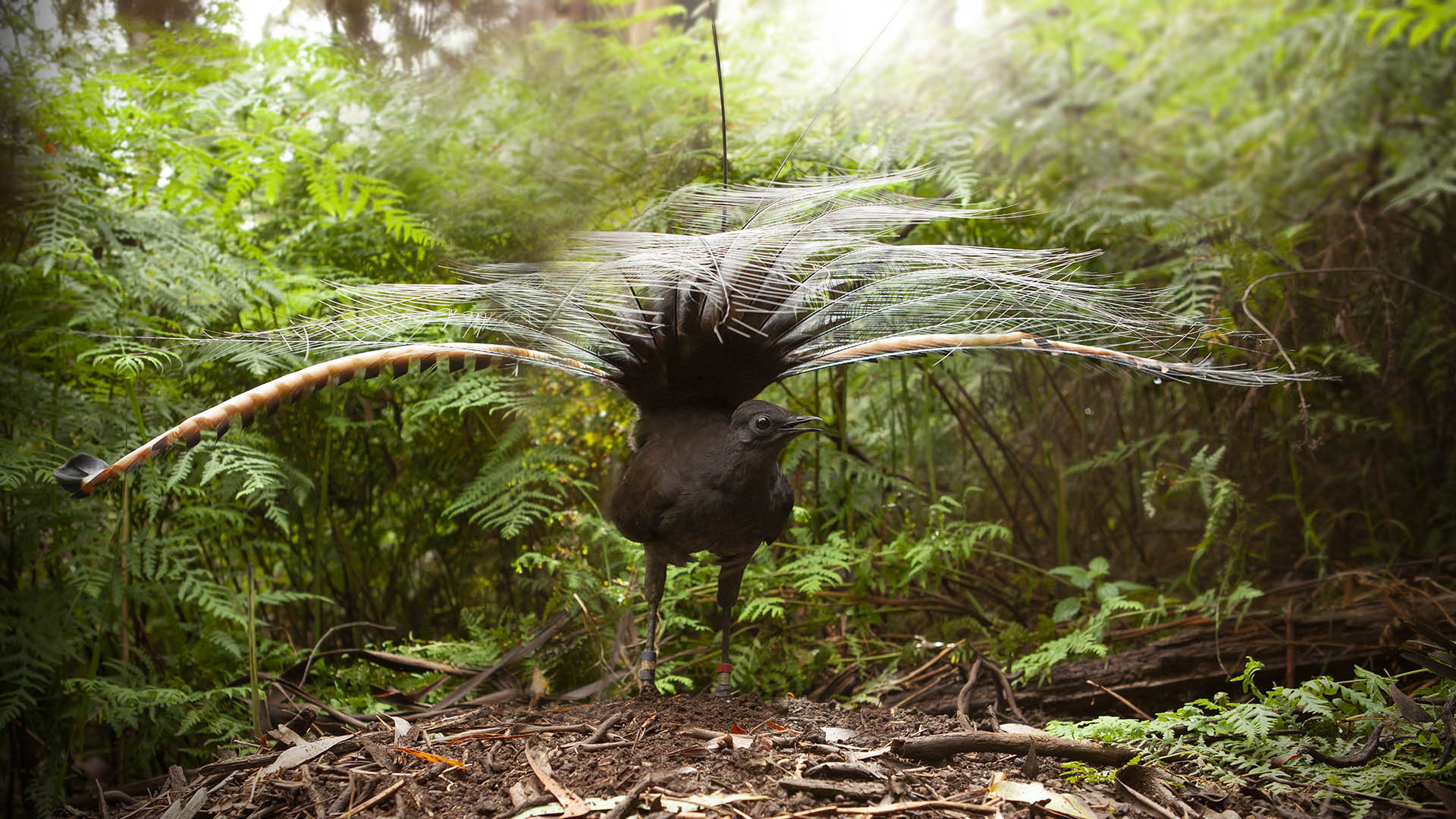February 26, 2021
Masters of mimicry, male lyrebirds use their skill to deceive potential mates
Imitation of “mobbing flock” alarm calls may deliver reproductive advantage
When birds see a predator in their midst, one defensive strategy is to call out loudly, attracting other birds of the same or different species to do the same. Sometimes individuals within this “mobbing flock” will fly over or at the predator or attack it directly.
Now, researchers reporting in the journal Current Biology on February 25 have found that male superb lyrebirds do something rather unexpected: they imitate a mobbing flock in courtship and even in the act of mating with a female.
The study’s lead author Dr Anastasia Dalziell, from the University of Wollongong’s School of Earth, Atmospheric and Life Sciences, said the mimicry appeared to be an important sexual behaviour and the male may gain a reproductive advantage by tricking the female into responding as if she may be at risk of a predator.
“Our paper shows that male superb lyrebirds regularly create a remarkable acoustic illusion of a flock of mobbing birds and, in so doing, create a complex but potent cue of a hidden predator,” Dr Dalziell said.
“Astonishingly, males only mimic a mobbing flock in two contexts: when a potential mate tries to leave a displaying male without copulating, or during copulation itself. These two moments are key to male reproductive success, suggesting that mimicking a mobbing flock is a crucial sexual behaviour for males.”
Male superb lyrebirds already are world famous for their extraordinary ability to mimic complex sounds of human origin such as chainsaws. But the reasons for their impressive mimicking skills have been somewhat mysterious, Dr Dalziell said.
Dr Dalziell and her colleagues didn’t set out initially to study the mobbing mimicry at all. They were expecting to capture instead the male’s loud, flamboyant, and musical mimetic recital song.
But, to their surprise, they began hearing the male lyrebirds mimicking a sound that’s much less melodious at the end of each mating dance display: the panicked alarm calls of a mixed-species flock of birds. “It was a superb piece of mimicry, if you will excuse the pun,” Dr Dalziell said.
The second surprise was watching and recording a male lyrebird mimicking a mixed-species mobbing flock during copulation.
“That seemed remarkable—indeed it seemed absurd,” Dr Dalziell said. “We gradually realised that mimicking a mobbing flock during copulation seemed to be the rule for lyrebirds.”
She noted that it’s very hard to observe copulations in lyrebirds.
“It was such a strange and complex behaviour that we thought that we really needed audio-video footage to show everyone, and we were lucky enough to eventually film several events.”
She said it’s not clear exactly how males benefit from their extraordinary mimicry. But the evidence suggests a likely explanation is that males set a kind of “sensory trap” for females.
The males may gain a reproductive advantage by tricking the female into responding as if she may be at risk of a predator. Because females have to watch out for predators all the time, the sound of the mob is tough to tune out.
Dr Dalziell said, “It’s a bit like saying, ‘Baby, it’s dangerous out there. Stay here with me.’” The stalling tactic might allow for copulation to happen in the first place or last longer, preventing females from leaving before sperm has been successfully transferred. In addition to being intriguing, the findings also extend scientists’ traditional understanding of mimicry.
“In the past, biologists have specified that mimicry involves three protagonists: a mimic, a signal receiver, and a model. But here we have an example of one individual—a male lyrebird—mimicking an entire ecological scene comprising multiple individuals and multiple species calling simultaneously,” she said.
The findings also suggest that elaborate bird songs aren't always an honest signal. They can be driven by sexual conflict and deception, which represents an important departure from conventional explanations for song evolution that rely on females’ preferences for male extravagance, the researchers say.
In future studies, the researchers plan to explore the females’ reactions to actual mobbing flocks versus mimetic ones. They also want to understand exactly how the mimetic song benefits males.
They’ve got lots of other questions, too. For example, Dr Dalziell said, another odd behaviour that they’ve observed is that during copulation, the male holds his wings over the female’s head.
“Are males ‘blindfolding' females to prevent females from detecting the male’s deception?” she asks.
ABOUT THE RESEARCH
‘Male lyrebirds create an acoustic illusion of a mobbing flock during courtship and copulation’, by Dalziell et al, is published in Current Biology (DOI: 10.1016/j.cub.2021.02.003)
This work was supported by a University of Wollongong VC Postdoctoral Fellowship, the Cornell Lab of Ornithology Rose Postdoctoral Fellowship Program, an Australian Postgraduate Award, an ARC Discovery Project, an NSF grant, the Australian National University, the Hawkesbury Institute for the Environment, BirdLife Australia’s Stuart Leslie Award program, and the Australian Geographic Society.
